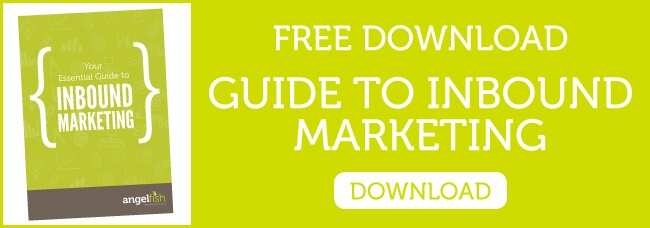Starting a business is a lot like getting on a rollercoaster – but the seats are greased and you’re not strapped in, and it’s teetering on the edge of a cliff over an ocean of fire. One of the main reasons it’s such a stressful experience is the lack of certainty that startup co-founders have when making key business decisions. Have we conducted enough market research? How long until we show a profit? Do people even want VR headsets for their pets?But perhaps the most niggling question of all is how much to spend on marketing costs. It’s notoriously hard to demonstrate Return on Investment (ROI) for marketing costs, so how do you justify marketing expenses in a tangible way when you’re trundling down your ever-shrinking runway?
There is never a clear-cut answer as to how much a business should spend on their marketing costs. However, as a general estimate, it is recommended that young companies spend around 20-25% of their revenue on marketing costs, while this figure is in the range of 10-15% for more established companies.
The answer will obviously depend on your company’s unique circumstances, like product, target market, location and whether you’ve secured funding or going the bootstrapping route. That said, there are a few universal considerations that can guide your marketing costs no matter your industry.
Your marketing channels should align with your business objectives.
You have a fair number of choices in today’s digital world when it comes to picking a marketing channel to reach your audience. But no two marketing channels are created equal and, as such, the channels that you choose should be primarily influenced by your business objectives. For this reason, you should first ask yourself what exactly your business objectives are.
When determining your business objectives, it’s important to categorise them into short-, medium- and long-term objectives. As a startup, this will inevitably revolve around your financial situation and how much investment you have secured. For instance, if you need to reach a certain customer or user benchmark before qualifying for your next round of funding, then that should be your short-to-medium-term objective. While using more channels means higher marketing costs, it also means faster and more consistent results. As such, your marketing budget – and channels – should be directly proportionate to the amount of funding you have secured and can afford to allocate.
It’s also important to assess your company’s internal skills and capabilities so that you have a reasonable understanding of what should be outsourced and what can be done in-house.

So how do you choose your marketing channel to fit your budget? Here are some things you should consider for each of the major channels when starting up:
Social Marketing
Marketing on social media has plenty of potential, especially if you’re targeting a consumer demographic that spends a lot of time online. While considerable time and effort goes into managing social profiles and sharing updates, this can be a great way for a startup to get going without a marketing budget.
Pay Per Click (PPC)
PPC advertising, like Google AdWords and targeted ads on Facebook, is a digital marketing staple. It’s a great way for young startups to see traffic and conversions when their site has limited domain authority and SEO rankings – both of which take time to develop organically. As such, PPC is suited for startups with investors that need to see results quickly.
Content marketing
Blogging is the bread and butter of an effective content marketing and is a great way to build brand recognition with potential customers. While it can take some time to see a return on invest for content marketing costs, the leads it yields are easier to close because they’re already familiar with your brand and consider you a good match. In the long term, you may also find that your cost per visit to your website will be lower than PPC and will also help your search engine rankings.
Trade Shows
Setting up a stall at a trade show is a great way to get your name out there quickly, but it can be very expensive for startups and small businesses. And if you’re targeting the international market, travel costs can add up quickly. It’s also a lot harder to track your results versus digital marketing channels.
Website
These days there’s no excuse for any company not to have a great website. It serves as a foundation for your digital presence and complements all other digital marketing strategies. Great website design doesn’t come cheap, but it’s worth it.
What is your cost per customer?
For your marketing costs to be worth it, you should have a solid understanding of how valuable your marketing efforts are in terms of each lead, conversion and customer, as well as your projected lifetime customer value. This is easier for established businesses, as they’re able to base their calculations on historic data, but startup revenue projections and targets are a great substitute – just be prepared to tweak the numbers as you get a better idea of actual performance.
To work out your cost per customer, take the cost of your sales and marketing over a period of time and then divide it by the number of customers acquired over that period. This number will inevitably be larger for young businesses with limited recognition and a smaller customer base, but that’s to be expected. This cost per customer should then be balanced with your Customer Lifetime Value or the gross profit margin expected from a given customer over your entire relationship. Keep in mind that this should account for support and servicing costs. For more information on balancing Customer Lifetime Value with cost per customer as a startup, read this great article by serial entrepreneur David Skok.
By taking this data-driven approach to your marketing expenditure, you’ll be able to make better decisions and more easily determine your marketing ROI.
Everything should come down to ROI.
At the end of the day, it all comes down to the money. How much can you afford to spend on your startup marketing strategy? Answer this question honestly and remember that while inbound marketing leads cost 61% less than outbound marketing leads, they are not free. Set a budget early on in the game and accept that limitation.
More importantly, carefully plan how you intend to divide that budget. Maybe your blog has been your most powerful tool to date and you want to invest 40% of the budget in it? Or maybe you want to spend 35% of the budget to develop a new eBook or online course? Just be sure you have the logistics settled before you start spending.
Inbound marketing is flexible and cost-effective enough to meet the marketing needs of startups and young businesses. Download your free copy of the Inbound Marketing guide to learn more.










